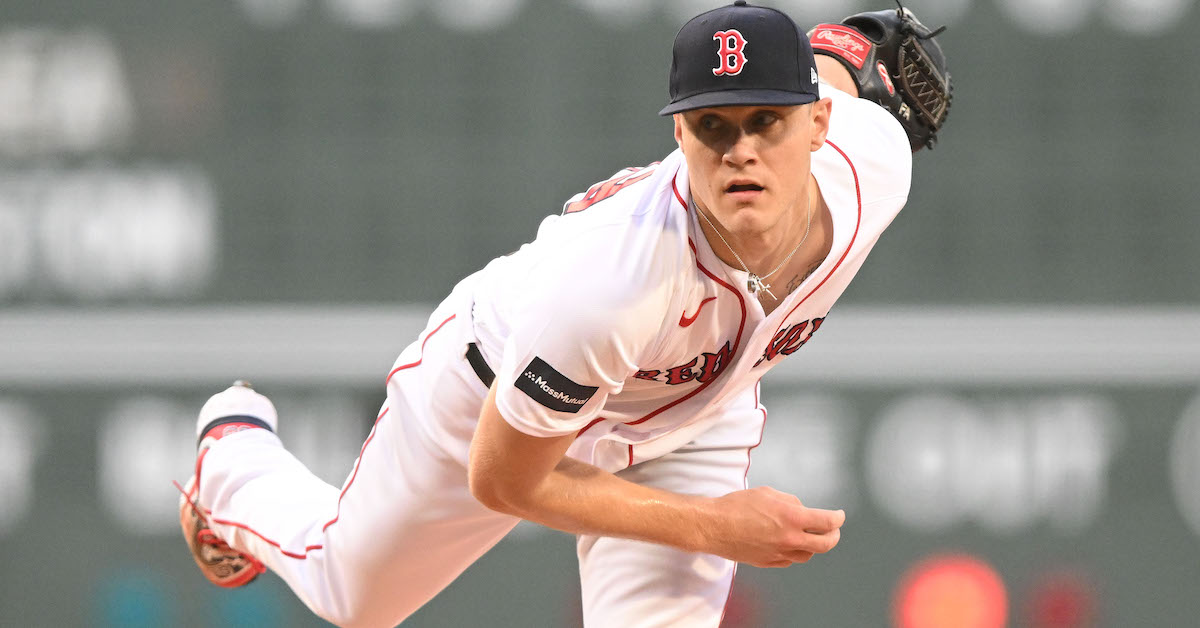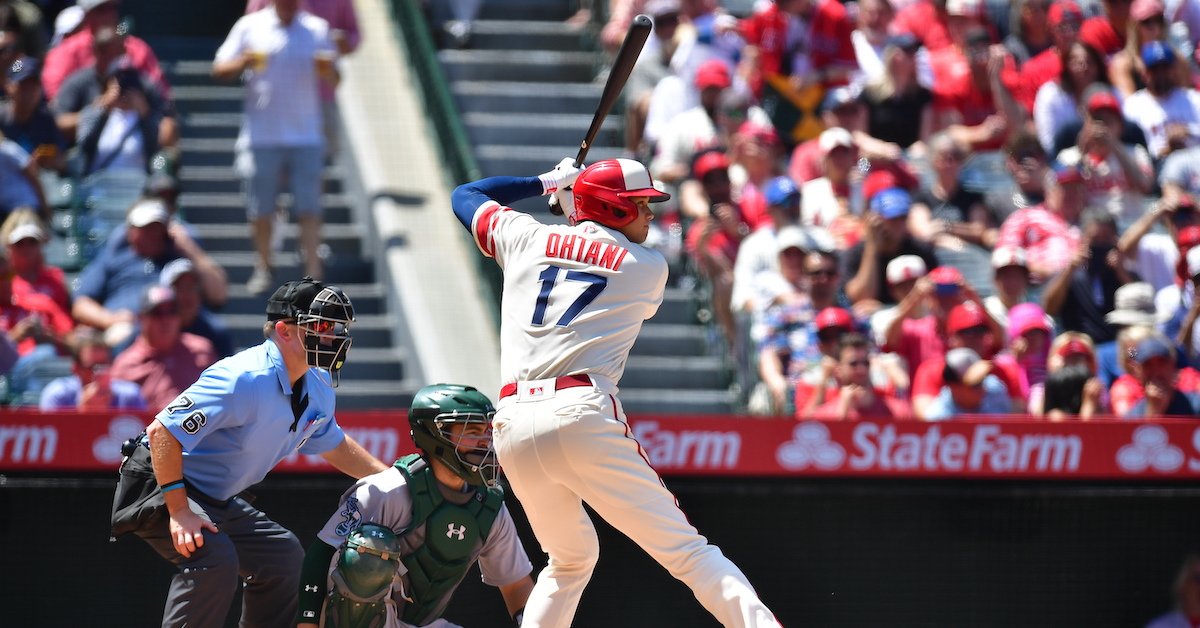We’re in for One Heck of a Second Half

Time is flying. It seems like only weeks ago that Shohei Ohtani struck out Mike Trout with a picture-perfect sweeper to finish off the World Baseball Classic, the Rays started the season with a franchise-record 13-game winning streak, and the Pirates shocked the baseball world with a 20-9 April. But no – the calendar turns to July this weekend, those Rays just played their 81st game on Sunday, becoming the first team to reach the halfway point, and Pittsburgh has fallen into fourth place in the NL Central. The days are getting shorter, now, and so is the remaining calendar – by the end of the week, most teams will have more regular season baseball behind them than ahead of them.
If that’s the bad news, here’s the good news: We’re poised for an exciting run over these next three months. With July around the corner, there are 23 teams within six games of a postseason spot, and 19 within four. No division lead is greater than 6.5 games. According to our playoff odds, 21 of the 30 clubs – a full 70% – have between a 10% and 90% chance of ending up in the playoffs. At this point in the baseball calendar last year, just 12 teams fell in that range:

After play on July 3, 2022, when teams had averaged the same number of games – just over 79 – as they have now, the Yankees and Astros had division leads of more than 13 games, making them virtual locks to make the playoffs. The Dodgers, who led the National League with a .628 winning percentage, and the Mets and Braves, who were battling it out in the NL East, all had better than 90% odds, as did the Blue Jays. As of Tuesday, only the Rays and Braves, who lead their respective circuits in wins, have eclipsed 90% – both are north of 98%. The Dodgers and Rangers are over 80%, and Arizona sits at 75.9%, but none of the 25 other teams have a 3-in-4 shot or better:
| 2022 Team | Playoff Odds | 2023 Team | Playoff Odds |
|---|---|---|---|
| Astros | 100% | Braves | 99.9% |
| Yankees | 100% | Rays | 98.9% |
| Dodgers | 98.3% | Dodgers | 89.7% |
| Mets | 97.1% | Rangers | 81.3% |
| Braves | 93.3% | Diamondbacks | 76.1% |
| Blue Jays | 92.9% | Giants | 75.2% |
| Padres | 87.5% | Orioles | 68.3% |
| Brewers | 85.4% | Marlins | 63.3% |
Things may be even murkier among the bottom tier of the postseason hopefuls. On July 3 last season, 12 teams, or 40% of the league, had less than a 1-in-10 chance of extending their season into the playoffs. On Tuesday, just seven teams fit that bill – the White Sox, Pirates, Tigers, Royals, A’s, Rockies and Nationals. Most everyone else is going to head into the second half of their schedule thinking they have at least a shot to grab a Wild Card. By that measure, we have about as much uncertainty left to sort out in the back half as we did when the season began – our Opening Day playoff odds also had seven teams shy of 10%. Only the Reds have played themselves over that threshold, and only the White Sox have played themselves under it.
There are a good handful of teams in the 10-20% range right now, but I’d say the difference between below 10% and 10-20% is a meaningful one. In that 10-20% bin are the Reds, who lead their division and who the projections may be underrating; the Cubs, Mariners, and Red Sox, who are a hot week or two from a playoff spot (and who seem capable of stringing a couple of hot weeks together if things fall the right way for a stretch); and the Mets and Cardinals, who, for as bleak as the first half has been, are 8.5 and 8.0 games out of a playoff spot, respectively, with enough talent on their rosters to make a significant second-half improvement feasible:
| Team | Record | GB from Closest Playoff Spot | Playoff Odds |
|---|---|---|---|
| Twins | 40-41 | – | 62.2% |
| Yankees | 43-36 | – | 60.1% |
| Blue Jays | 43-47 | 0.5 | 58.9% |
| Astros | 43-37 | 1.0 | 51.1% |
| Brewers | 41-38 | 0.5 | 50.1% |
| Angels | 44-37 | – | 46.7% |
| Phillies | 41-37 | 3.0 | 45.0% |
| Guardians | 38-40 | 0.5 | 33.6% |
| Padres | 37-42 | 7.5 | 32.1% |
| Reds | 42-38 | – | 19.0% |
| Cubs | 37-40 | 3.5 | 18.6% |
| Mariners | 38-40 | 4.5 | 16.1% |
| Red Sox | 40-40 | 3.5 | 15.9% |
| Cardinals | 33-45 | 8.0 | 14.1% |
| Mets | 36-43 | 8.5 | 13.5% |
In terms of the ultimate end goal, at this time last year, our playoff odds had just 10 teams with a 2% shot at winning the World Series – with the eventual NL champion Phillies notably not among them – with about two-thirds odds that it would be the Dodgers, Braves, Astros, Yankees, or Mets. This year, though we give about a 47% chance that it’ll be any of the Braves, Rays, or Dodgers, half of the league has a better than 2% chance.
I largely opposed playoff expansion, and I still think it has made the postseason tournament too big, but that doesn’t mean we can’t appreciate what it does offer, which is that it can keep middling teams motivated to win through this point of the season and beyond. But some of the particulars of this competitive landscape are due more to the quirks of division alignment – the same quirks that have brought us an AL East with five teams better than any AL Central team. This season, these quirks mean that the Wild Card races are populated almost exclusively by East and West teams in both leagues, but the Central races are tight enough that second- and third-place teams like Cleveland, Cincinnati, and the Cubs are still very much within reach of the playoffs.
This isn’t a good thing for the general fairness of playoff qualification. We could easily end up in a situation in which the first Wild Card team out in either league has a better record than their league’s Central division champion – right now in the AL, Houston (42-37) and Toronto (43-37) would be left out in favor of Minnesota (40-41). But it’s a great thing if you’re rooting for total chaos in the second half. More teams in the hunt and fewer teams running away with division titles means more meaningful games late into the summer.
To put it another way, with 21 teams left with less-than-surefire playoff odds one way or the other, a 15-game day on the schedule should include on average between 13 and 14 games featuring at least one of these teams. With only 12 teams in that no-man’s land, as was the case last year, a 15-game schedule would include on average nine or 10 games with at least one of these contenders. That’s about four more games with playoff implications every day for fans.
As much as this has to do with extra Wild Cards and quirky division alignments, it seems like some of the credit is owed to the shifting sands of the league, as well. This year, we’ve seen the Orioles, Rangers, Diamondbacks, Marlins, Angels and now Reds emerge as playoff hopefuls – or safe bets, as the case may be – many of whom seem poised to stick around for years to come. It’s an impressive influx of teams trending upwards, and quickly – while the Orioles’ resurgence started early enough last year for the team to finish with 83 wins, the other five clubs averaged just 69.2 wins in 2022 and are projected to improve by an amazing average of 17.1 wins this season:
| Team | 2022 W | 2023 Projected W | Increase |
|---|---|---|---|
| Rangers | 68 | 89.8 | 21.8 |
| Marlins | 69 | 87.6 | 18.6 |
| Reds | 62 | 79.1 | 17.1 |
| Diamondbacks | 74 | 89.4 | 15.4 |
| Angels | 73 | 85.5 | 12.5 |
On the flip side, most of 2022’s top dogs haven’t exactly ceded their spots – the Braves, Rays, Astros, Dodgers, Yankees and Blue Jays aren’t quite ready to give way. In the middle of the pack, the Brewers, Phillies, Red Sox, Mariners, Padres, Twins and Guardians are hanging on while they try to find a hot stretch the way the Giants have. And while there’s little joy in St. Louis and Queens at the moment, given the talent in those clubhouses, our playoff odds aren’t ready to write them off completely, either.
The next few weeks will be crucial for some of these teams on the cusp of contention. With such a competitive field heading into the month, we might soon be closing in on an August 1 trade deadline that could feature far fewer sellers than buyers. Even the teams with comfortable playoff outlooks will be looking to add, so asking prices will likely be high, and it’ll be interesting to see which teams bite at those high prices knowing their own chances of a deep playoff run might be diluted by the field around them, not to mention an extra round of playoff randomness.
Last September, I wrote about the lack of intensity in the chase for playoff spots, much to the chagrin of anxious Mets and Braves fans enduring a nail-biting division race. So far this year, it looks like we’re in better shape to send a number of playoff races into the deep summer and early fall, with some fresh faces to boot. There’s a lot to sort out between now and October, and the sorting out is the best part. Here’s hoping this season stays messy as long as it can.










